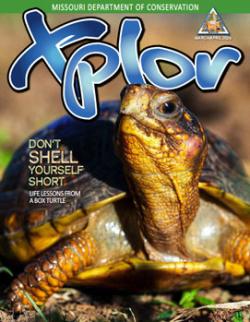
Xplor reconnects kids to nature and helps them find adventure in their own backyard. Free to residents of Missouri.


































Stay in Touch with MDC news, newsletters, events, and manage your subscription

Xplor reconnects kids to nature and helps them find adventure in their own backyard. Free to residents of Missouri.

A monthly publication about conservation in Missouri. Started in 1938, the printed magazine is free to residents of Missouri.
JEFFERSON CITY–Missouri will not have a ruffed grouse hunting season this year for the first time in more than 25 years. However, the Missouri Department of Conservation says that does not necessarily mean ruffed-grouse hunting is gone from the Show-Me State forever.
Acting on a recommendation from its staff, the Conservation Commission voted earlier this year for an emergency closure of the grouse season, which was to run from Oct. 15 through Jan. 15. Low grouse population numbers were cited as the reason for the emergency closure. The action supersedes information printed in the 2010 Summary of Hunting and Trapping Regulations, which were printed before the decision to close grouse season.
Ruffed grouse are native to Missouri, although the Show-Me State is near the southwestern edge of the species’ historic range. Habitat destruction and unregulated market hunting largely eliminated them from Missouri forests by the 1930s.
The Conservation Department launched a successful ruffed-grouse restoration program in 1959, and Missouri had its first modern hunting season in 1983. Earlier this year, the agency’s Regulations Committee recommended closing the season. This was partly because grouse numbers remain low in spite of repeated attempts to reintroduce grouse in areas with suitable habitat as late as 1994. Closing the season also made sense because the Conservation Department and the Ruffed Grouse Society are seeking a source of grouse to resume reintroduction work.
“It didn’t make sense to have people hunting grouse if we were going to be bringing them in from other states to try to build the population,” said Wildlife Division Chief DeeCee Darrow. “Our grouse numbers are so low right now that very few hunters pursue them, and very few are taken each year. This is probably a good time to pause and regroup.”
Ruffed grouse are ground-nesting birds closely related to quail. They are much larger, however, with adults averaging more than a pound compared to five or six ounces for adult bobwhite quail. Bobwhites favor habitat with large amounts of pasture, row crops and other open land interspersed with shrubby cover. In contrast, ruffed grouse are adapted to a patchwork of forest and the dense vegetation that develops on land where timber harvests have occurred.
-Jim Low-